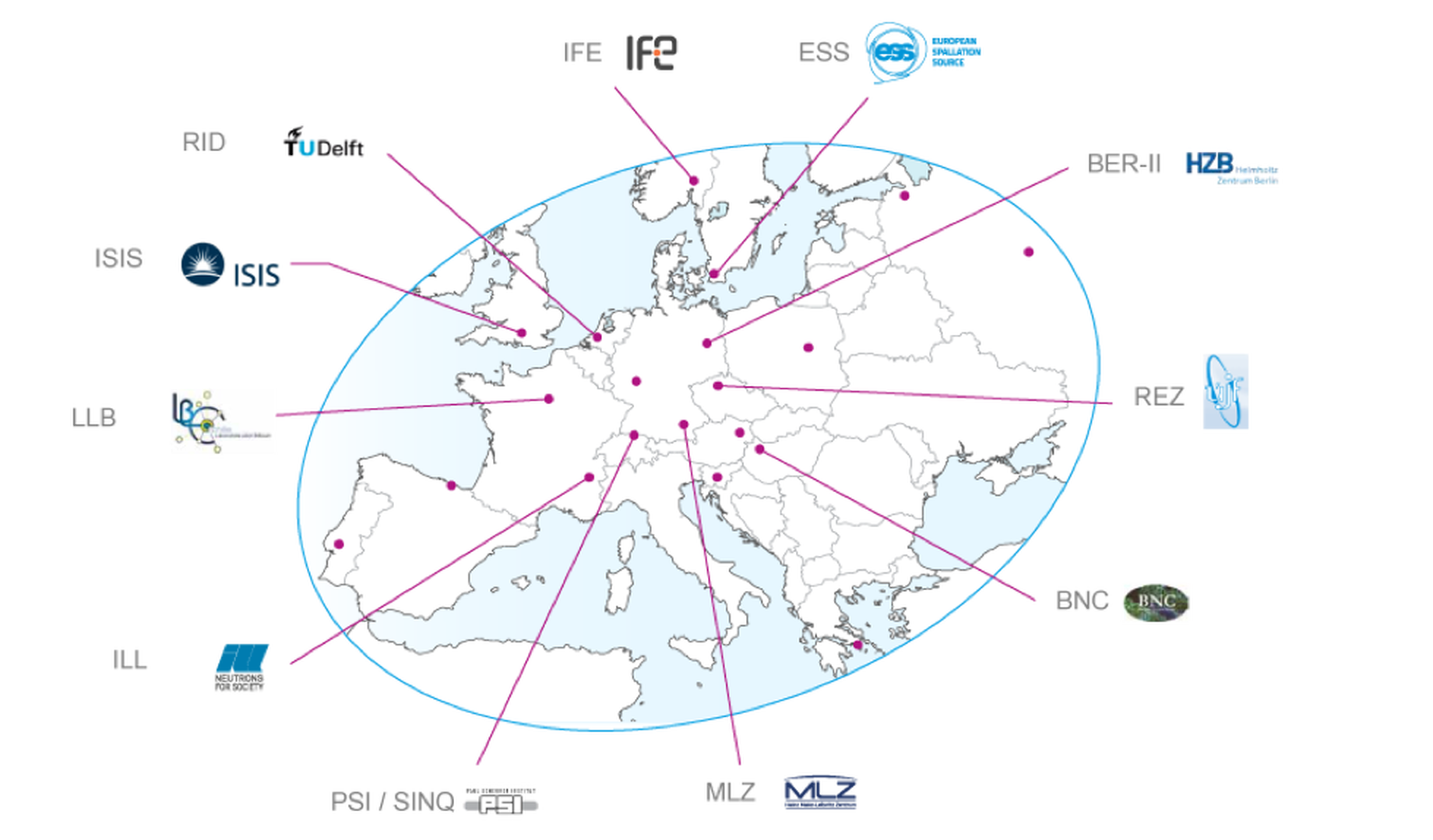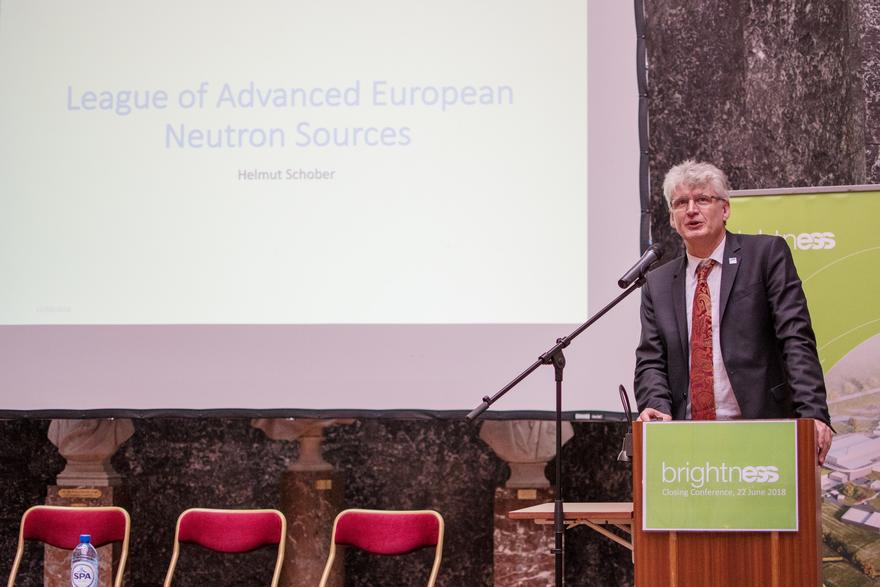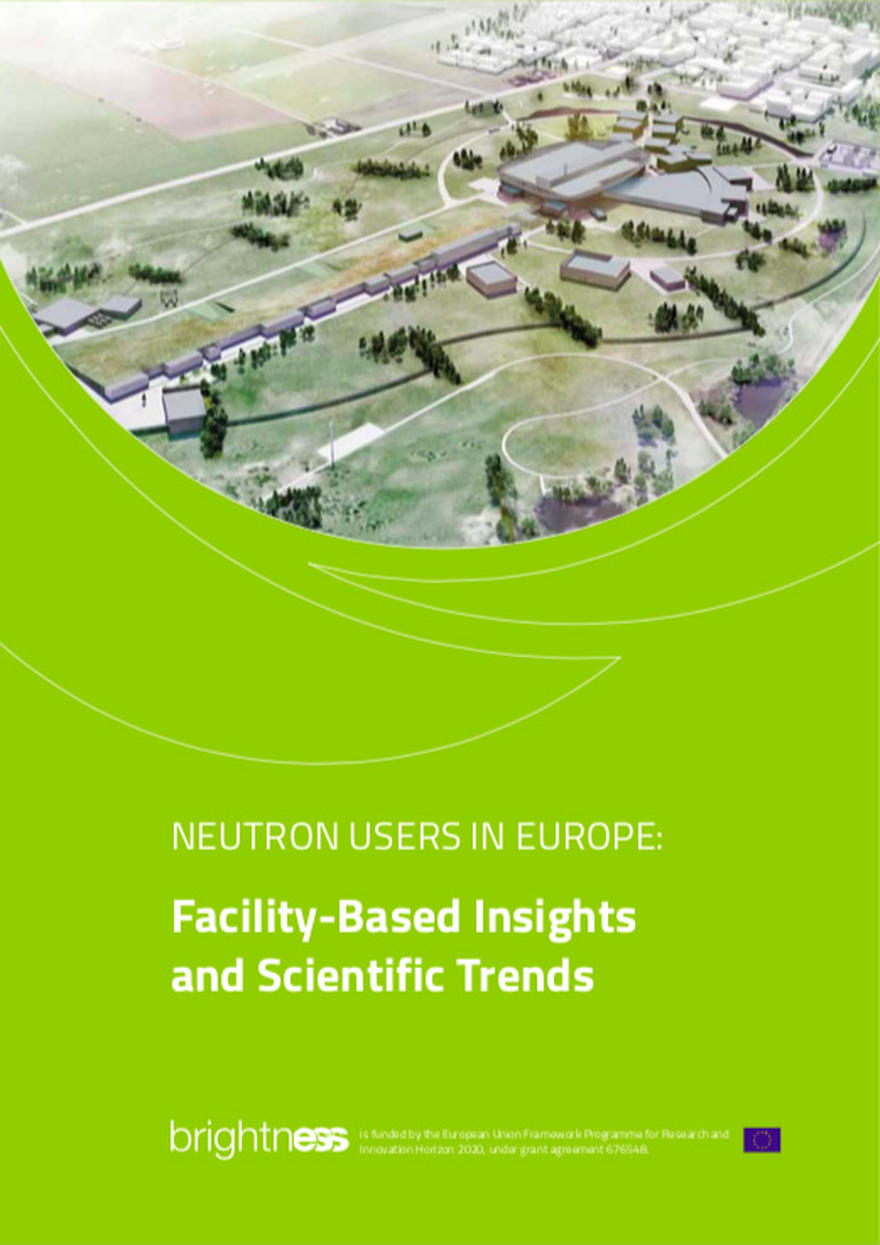
The League of Advanced European Neutron Sources, LENS, hopes to guide and advocate for the European neutron user community in this current period of transition and optimism catalysed by the advent of the world’s most powerful spallation source, ESS.
BRUSSELS—The forthcoming establishment of a new strategic consortium of European neutron sources was announced Friday in Brussels.
The League of Advanced European Neutron Sources, or LENS, will bring together the trans-national European neutron source facilities with the aim to, according to the group’s charter, “facilitate any form of discussion and decision-making process that has the potential to strengthen European neutron science via enhanced collaboration among the facilities”.
To Benefit National Facilities and their User Communities
The announcement came during the European Spallation Source’s (ESS) BrightnESS Closing Conference, which took place June 22 at the Royal Flemish Academy of Sciences and Arts. An introduction to the initiative was given by Institut Laue-Langevin (ILL) Director Helmut Schober. Prospective partners in the consortium include nearly a dozen facilities in France, Germany, Sweden, Hungary, the United Kingdom, the Czech Republic, Norway and Switzerland. Other qualifying facilities may join going forward.
“Probing materials with neutrons stands as one of the pillars of our scientific analytical techniques,” said Schober in his introduction to the LENS consortium. “As such, neutron sources are essential to the advancement of both the research that works to directly address our society’s grand challenges and the fundamental science at its foundation.”
Most of the prospective LENS partners are national facilities, where the majority of European neutron-based research is conducted. One emphasis of the group’s activities, therefore, will be on the interaction between these national user communities and European funding organisations and their representatives. By optimising resources and closely aligning policies among partners, the LENS vision is one of continuous improvement and adaptation by neutron science facilities to the communities they serve.
To Foster Successful Launch of ESS
Other fundamental goals of the consortium include the establishment of common representation and impact promotion. By speaking with the collective weight of a common voice, LENS hopes to maintain the attention and support of European and national funding authorities to benefit the European user community as a whole.
“Europe has achieved global leadership in neutron science, and the research community is a strong one. LENS will build on this success to create an even more effective ecosystem for collaboration between facilities going forward,” said John Womersley, ESS Director General.
A major driver of LENS is to foster the successful launch of ESS in Sweden, while at the same time maintaining complementary and sufficient overlap with the current global flagship facility, ILL, in France. ESS is under construction and stands at 45% complete. It expects to begin its scientific user programme in 2023.
NEUTRON USERS IN EUROPE: Facility-Based Insights and Scientific Trends
A facility survey conducted by the EU-sponsored BrightnESS project and published by ESS in May 2018. This report is the outcome of a collaborative effort between ESS, BrightnESS partners, and 15 neutron sources that provided data in the pan-European survey.



























